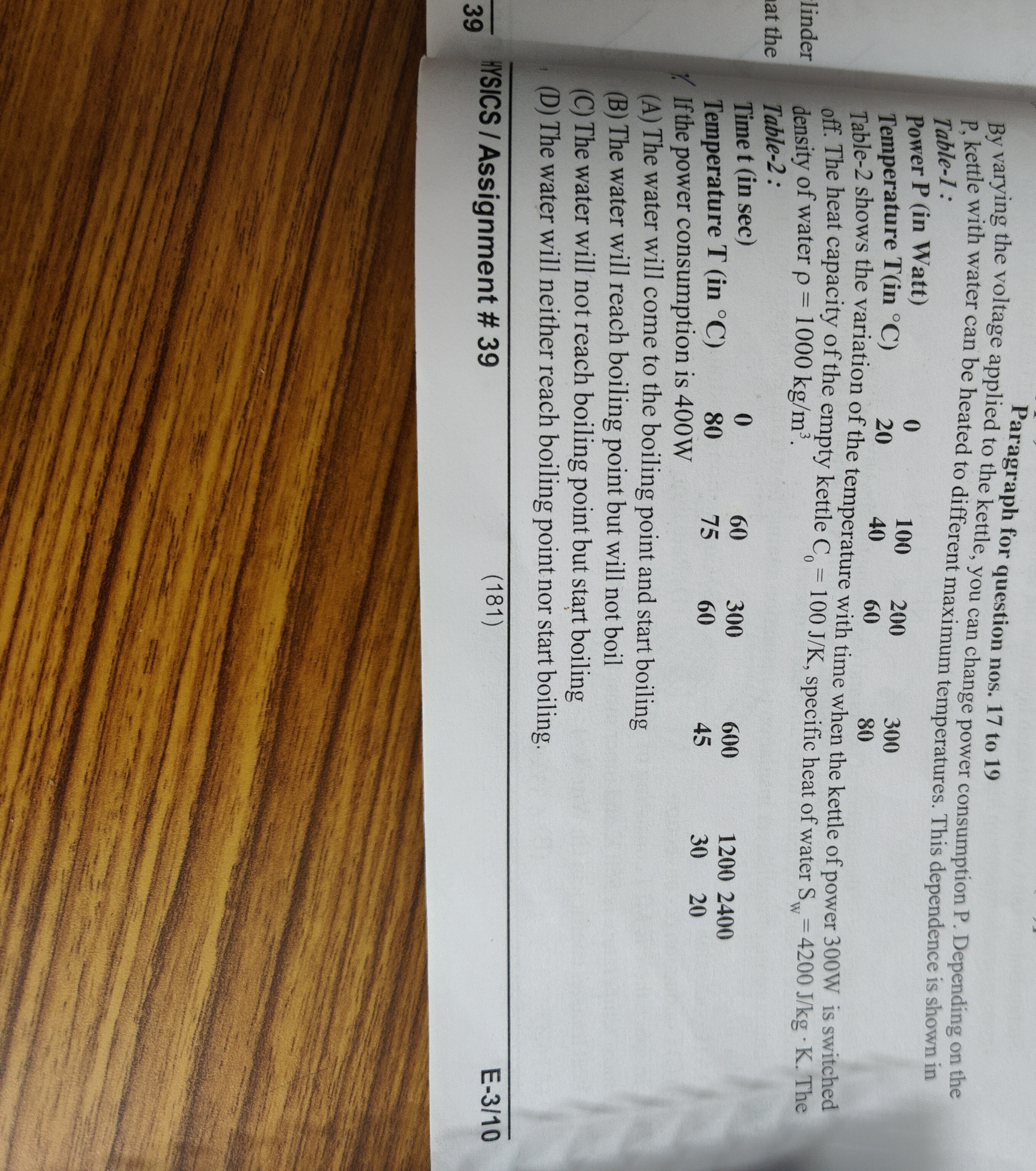Question
Question: Paragraph for question nos. 17 to 19 By varying the voltage applied to the kettle, you can change po...
Paragraph for question nos. 17 to 19 By varying the voltage applied to the kettle, you can change power consumption P. Depending on the P, kettle with water can be heated to different maximum temperatures. This dependence is shown in Table-1:
| Power P (in Watt) | 0 | 100 | 200 | 300 |
|---|---|---|---|---|
| Temperature T(in °C) | 20 | 40 | 60 | 80 |
Table-2 shows the variation of the temperature with time when the kettle of power 300W is switched off. The heat capacity of the empty kettle C0 = 100 J/K, specific heat of water Sw = 4200 J/kg . K. The density of water ρ = 1000 kg/m³. Table-2:
| Time t (in sec) | 0 | 60 | 300 | 600 | 1200 | 2400 |
|---|---|---|---|---|---|---|
| Temperature T (in °C) | 80 | 75 | 60 | 45 | 30 | 20 |
If the power consumption is 400W

The water will come to the boiling point and start boiling
The water will reach boiling point but will not boil
The water will not reach boiling point but start boiling
The water will neither reach boiling point nor start boiling.
The water will reach boiling point but will not boil
Solution
The rate of heat loss from the kettle to the surroundings can be modeled using Newton's Law of Cooling: Ploss=k(T−Tambient).
From Table-2, the ambient temperature is Tambient=20∘C. Using data from Table-1, we can find the heat loss constant k: For P = 300W, T = 80°C: 300=k(80−20)⟹300=60k⟹k=5 W/°C.
When the power consumption is 400W, the equilibrium temperature Tmax is reached when Psupplied=Ploss. 400=5(Tmax−20) 80=Tmax−20 Tmax=100∘C.
At T=100∘C, the heat loss is Ploss=5(100−20)=5(80)=400 W. The net power supplied is Pnet=Psupplied−Ploss=400 W−400 W=0 W. Since the net power is zero at the boiling point, there is no energy available for vaporization. Therefore, the water will reach the boiling point but will not boil.
